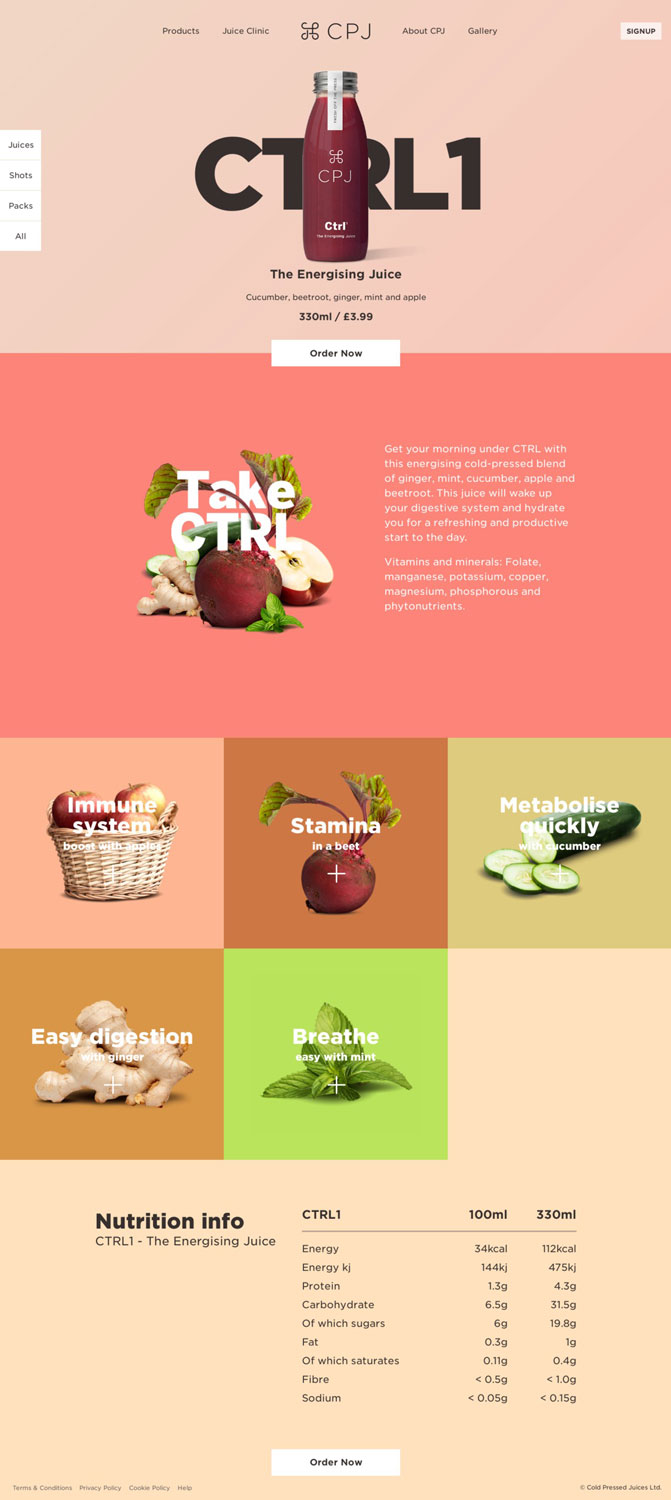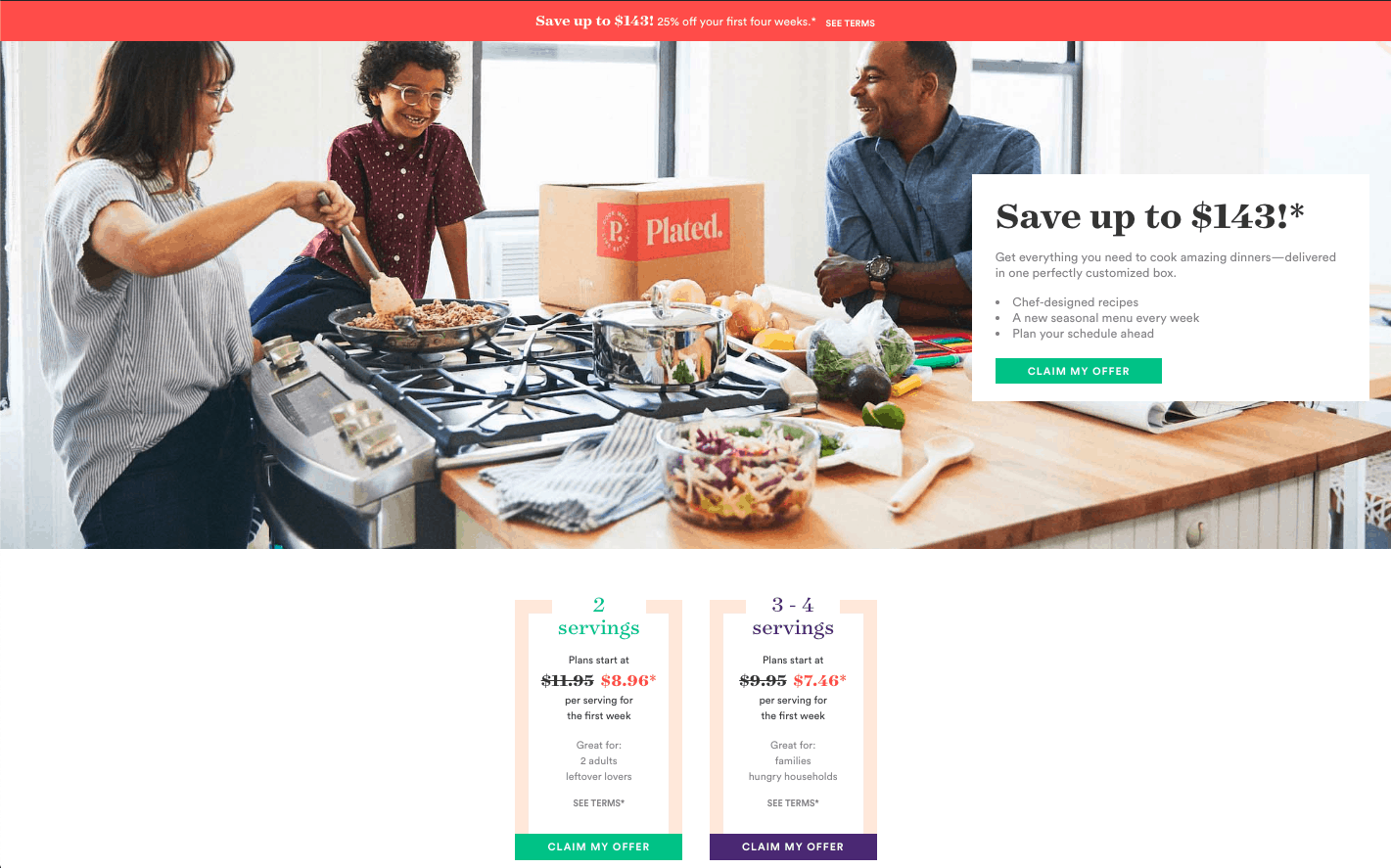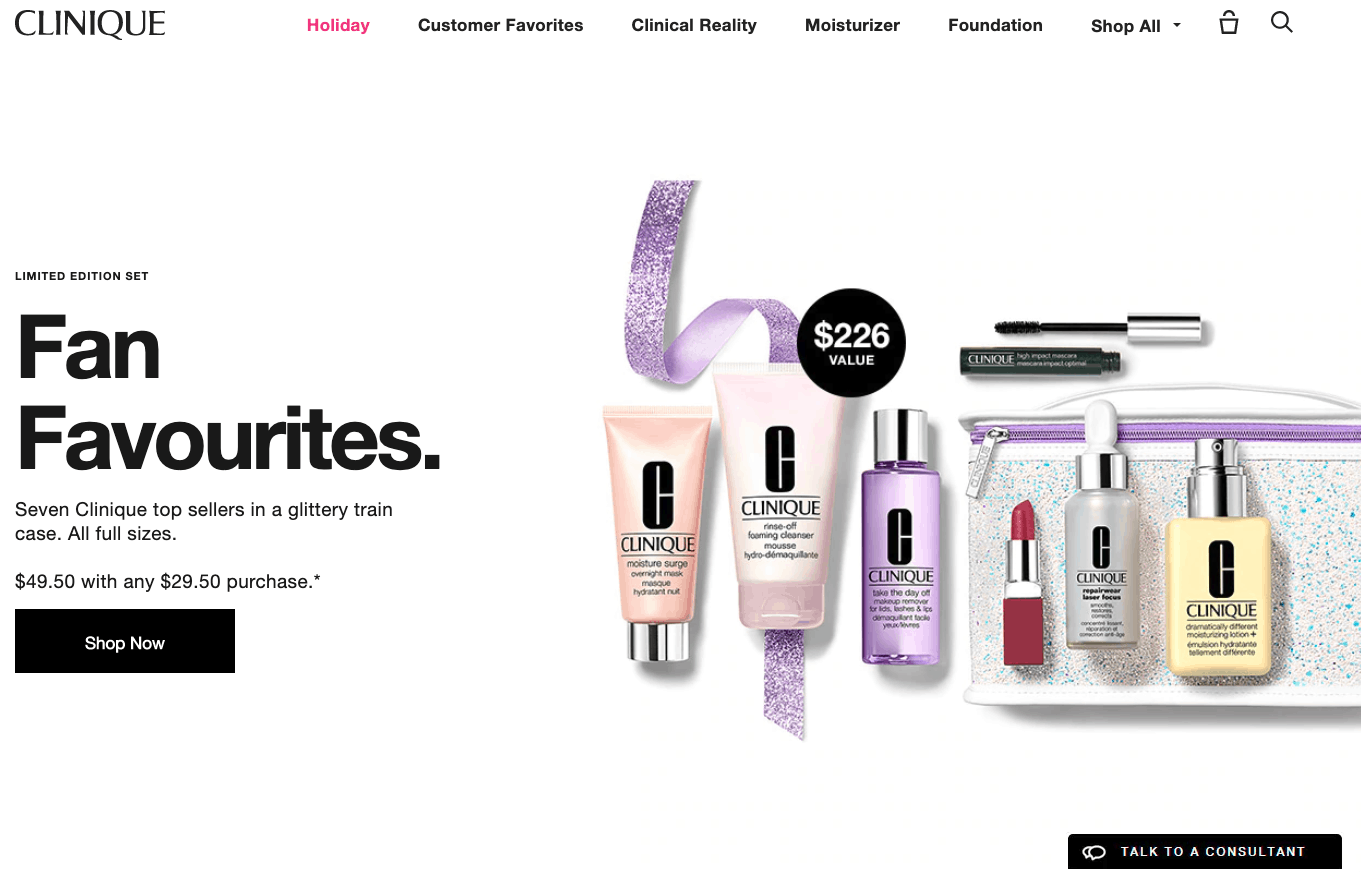What is an Ecommerce Landing Page?
E-commerce landing pages are designed to entice people to make a purchase. A simple concept, sure, but driving conversions requires more than a “buy now” CTA.
A good e-commerce landing page speaks to a specific persona, solves a problem, and shows visitors exactly how the product looks.
While that might all seem straightforward, the reality is, many online retailers use generic product pages instead of targeted landing pages in their marketing campaigns. And while it might sound incredibly time-consuming, brands that take the time to create custom landing pages for each campaign are likely to see more leads and more sales.
If you want to drive more conversions, you’ll need to think strategically about your e-commerce landing page design. In this article, we’ll go over some best practices to help you move more product.
Know the Difference Between an E-Commerce Landing Page and a Product Page
E-commerce landing pages are often confused for product pages, and while both are designed to sell products, each serves a different purpose. E-commerce landing pages are standalone web pages designed specifically to drive targeted traffic toward completing a conversion. Done right, they include a targeted offer that speaks to a specific user segment.
The purpose of a product page is a bit different. These pages are meant to highlight the product’s features and benefits and typically include links to other parts of the website, so shoppers can browse through your other offerings. It’s also worth pointing out, product pages are typically a one-size-fits-all web page, designed to provide information to all visitors.
According to a report from Monetate, visitors that land on product pages (like the backpack) are 72% more likely to bounce than those who land on all other types of landing pages and convert at half the rate.

Make Sure You Use High-Quality Product Images
Landing pages that convert well tend to be attractive. That’s just basic common sense, right? In e-commerce, however, photos make or break the shopping experience.
We’re talking about products that people will wear, eat, or display in their homes, so your landing page needs to go beyond the emotional and show the product in a tangible way. Here’s an example from Sumo, which compares a basic product photo to one showing the product in action.
Plain Product Photo:
Dynamic Product Photo:
Product photos should also provide sufficient detail and multiple views of the product. You might also want to add a zoom feature to your e-commerce landing page to encourage people to get up close and personal with your product despite the distance.
It’s also worth pointing out that your e-commerce landing pages are not the best place for stock photos. When you’re trying to build trust, stock photos work against you, especially given the fact that many of the free use options are used by hundreds of businesses. The point is, using stock photos can give your audience the impression that you’re not showing them the real product.
If you need some pointers for shooting your own product images, Shopify has put together a comprehensive guide that can help you out.
Lead with the Benefits
Consumers don’t just buy things because they like spending money. They buy things because they believe that a product or service will somehow make their lives better. In this example below, juice company CPJ focuses on the idea that starting your day by drinking your nutrients can lead to better health outcomes.

The copywriting highlights nutritional info and uses words like “energy” and “control” that might appeal to readers that feel overwhelmed by changing their habits. That’s a lot more effective than leading with the nutrition facts, right?
Promote an Offer
Offering discounts is one way to drive people toward action. You might offer a discount to welcome new customers like Plated has done in this example below.

It’s important to note that while “free stuff” will attract some users, be careful to phrase your landing pages copy in a way that highlights the value of your product. The reason why the Plated example works so well is that they show the offer compared to the regular price, they let you know how much you can save (up to $159!), and list the benefits of the service–chef-designed recipes, no meal-planning, etc.
Add Social Proof to Your Pages
We’re willing to bet that you typically read a few reviews before buying something online. After all, 97% of customers check out product reviews before making a purchase, and product ratings and reviews can increase conversions by up to 270%. According to KlientBoost research, landing pages that included reviews with star ratings converted more often than those without star ratings included.
Consider adding reviews from an outside site like TrustPilot or Google.
Social proof isn’t limited to star-reviews, though. Social proof is also especially when you include real names, a photo, and an image of the product alongside the testimonial.
Limit On-Page Distractions
As is the case with other types of landing pages, e-commerce landing pages work best when there aren’t multiple on-page elements competing for the viewer’s attention.
Here’s an example from Clinique used to promote a special offer. What’s nice about this example is the copy is minimal and gets straight to the point.

E-commerce Landing Pages are More About Conversions than SEO
While you can make your product pages more SEO-focused to capture organic traffic and rank higher on the SERPs, that’s not really the point—let your product pages take care of the SEO piece of the puzzle.
Here’s the thing, SEO strategies are designed to rank, and often, top ranking pages contain the following elements:
- Longer copy
- High keyword density
- Outbound links
- Internal links to other pages
In other words, good content typically contains several elements that distract the viewer from taking immediate action.
Are your E-Comm Landing Pages Struggling?
Our team of conversion rate experts would be happy to help you learn about the strategies we’ve developed to help companies build the future of sales and marketing.

